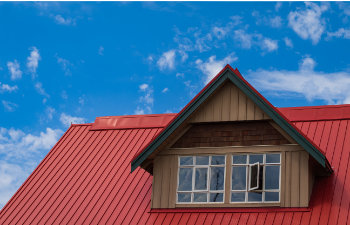
When it comes to commercial buildings in hot climates, having the right roofing solution is not merely an option—it’s a necessity. The unique demands of high temperatures require roofing systems that can withstand heat while maximizing energy efficiency.
Mid-Atlantic Roofing Supply is the nation’s premier two-step distributor, specializing in commercial roofing materials designed to meet these challenges. With an extensive network across seven states in the Middle and Southern United States, we provide top-notch products tailored for your commercial roofing needs.
Understanding Cool Roofing Technology
Recent advancements in roofing technology have introduced innovative solutions specifically aimed at reducing heat absorption. Cool roofing technology is designed to reflect more sunlight and absorb less heat than standard roofing materials. This is achieved through reflective coatings, specially engineered membranes and materials that can keep the roof surface significantly cooler.
The U.S. Department of Energy states, “Conventional roofs can reach temperatures of 150°F or more on a sunny summer afternoon, sun. Under the same conditions, a reflective roof could stay more than 50°F (28 °C) cooler.”
For commercial buildings, the use of cool roofing systems can lead to substantial energy savings, lower cooling costs and improved indoor comfort.
Best Types of Commercial Roofing for Hot Climates
Mid-Atlantic Roofing Supply sources the following commercial roofing products at wholesale prices to our partner builder and roofing supply stores:
- Thermoplastic Polyolefin (TPO): TPO roofing membranes are highly reflective, making them popular for hot climates. This roofing type not only reflects UV rays but also withstands cracking and puncturing, offering durability alongside efficiency.
- Ethylene Propylene Diene Monomer (EPDM): EPDM roofing is known for its heat and UV radiation resistance. When properly maintained, this rubber membrane provides excellent insulation and can be installed in large, seamless sheets. Its lifespan is over 30 years.
- Modified Bitumen: This roofing type combines asphalt layers with a modified polymer for enhanced durability. Modified bitumen roofs are reflective and waterproof, making them suitable for hot climates while ensuring longevity.
How Roofing Systems Reflect Heat
The effectiveness of these roofing systems lies in their ability to reflect heat. Materials with high Solar Reflectance Index (SRI) ratings are essential for keeping roofs cooler. A higher SRI means a roofing material can reflect more solar energy and absorb less heat. This reduces the energy consumption required for cooling, which can be particularly beneficial during peak summer months when air conditioning use is at its highest. For example, buildings with cool roofs can achieve energy savings of up to 20% in cooling costs.
Mid-Atlantic Roofing Supply: Your Trusted Partner
At Mid-Atlantic Roofing Supply, we recognize the unique requirements of commercial roofing in hot climates. Our extensive inventory features top brands in roofing materials, and our knowledgeable staff is committed to providing tailored support to both large and small construction companies. By partnering with us, you gain access to the best products, industry expertise and exceptional hometown customer service, no matter the location of your project.
As a two-step distributor, we streamline the procurement process for our clients, ensuring that all materials are sourced efficiently and effectively. Our distribution services extend across the United States, allowing us to confidently cater to even the largest commercial roofing projects.
FAQs on Commercial Roofing for Hot Climates
What is the best roofing material for hot climates?
The best materials are typically reflective membranes such as TPO and EPDM, which minimize heat absorption and improve energy efficiency.
How does a cool roof work?
A cool roof reflects more sunlight and absorbs less heat than conventional roofing materials, reducing indoor temperatures and energy costs.
What are the benefits of a green roof in hot climates?
Green roofs offer insulation, reduce urban heat and promote biodiversity while providing stormwater management benefits.
How often should commercial roofs be inspected?
To ensure their integrity and performance, it is advisable to inspect commercial roofs at least twice a year or after severe weather events.
Can reflective coatings be applied to existing roofs?
Yes, many existing roofing systems can benefit from reflective coatings, which can enhance their performance and extend their lifespan.
Wholesale Commercial Roofing Products
Selecting the right roofing system for commercial buildings in hot climates is critical for maximizing comfort, efficiency and durability. At Mid-Atlantic Roofing Supply, we are dedicated to being your partner in sourcing the best roofing materials supported by expert advice and service. Explore our offerings today and ensure your commercial projects thrive in even the hottest conditions.
Posted on behalf of